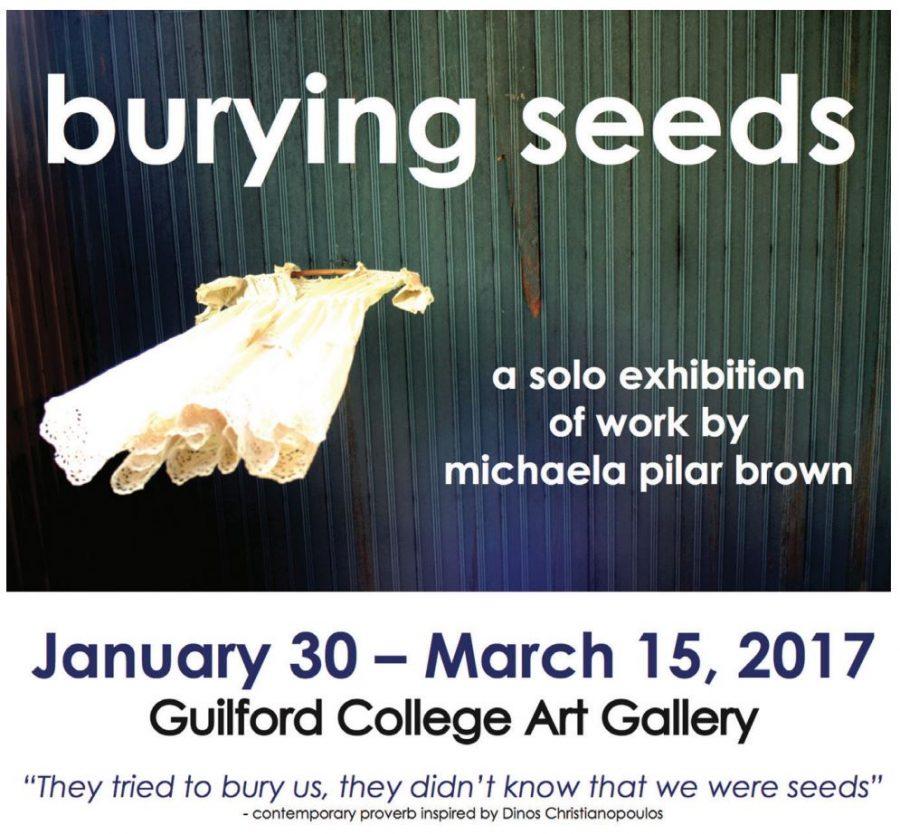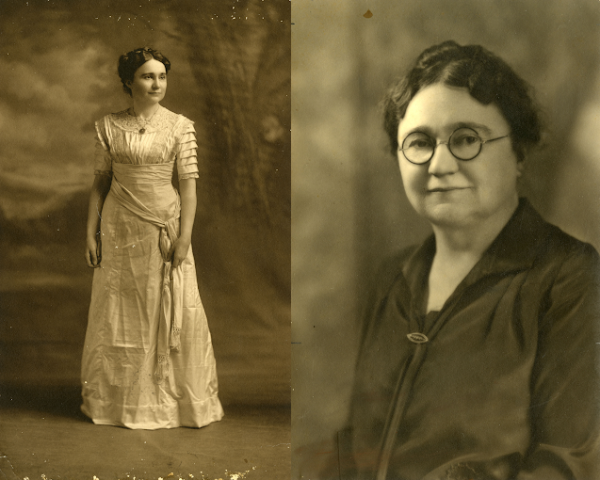Artist’s work offers insight into black history
The art exhibition Burying Seeds by Michaela Pillar Brown will be open to the Guilford community and to the public until Wednesday, March 15th at Hege Library.
For the past month, Michaela Pilar Brown’s artwork, ranging from a massive installation of found objects to deeply personal staged photographs of herself, has been on display in the Guilford College Art Gallery located in Hege Library.
Her exhibition, entitled “Burying Seeds,” focuses on the history of African American progress and struggle. This past Tuesday, Brown visited campus to talk about her artwork and how it relates to contemporary issues.
Her visit is part of Guilford’s “Art and Identity Discussion Series,” an endeavor funded by a PPS grant and organized by Antoine Williams, assistant professor of art. The series hopes to engage Guilford students in contemporary issues surrounding artists’ works.
“Art is about having conversations,” said Brown. “Not just about making it and sending it.”
Throughout the artist reception, Williams and Brown encouraged the audience to discuss issues such as immigration, women’s rights, race and gender inequalities, cultural appropriation and activism in a hostile political climate.
“I think the next step in civil rights isn’t just people of color marching for their freedom,” said Brown. “Some folks on the other side need to step up too. I’m still fighting the same battles my mother and her mother fought. Black women committed to Hillary Clinton, and it didn’t matter. Does it matter? Does my work matter?”
Art does matter, even if it seems superfluous in contemporary culture. Art is emotional, intellectual and political expression that incites debate and discussion about present issues, as evidenced by the discussion held by Williams and Brown.
“I think this is revolutionary, radical and brave,” said junior Terri Jones. “I’ve never had a space where we can talk about black history like this. ‘Burying Seeds’ is brave and important.”
“This exhibition is prominent to current issues we’re facing,” said junior Nara Seymour. “I especially enjoyed discussing cultural appropriation and globalization: being able to connect with people. Everybody deserves beauty.”
Brown’s work is incredibly personal. Pointing to found objects around the room, she explains the story behind each and every one.
“Those chains came from my father’s barn,” she said as the audience turns towards the installation in the middle of the room.
“That gun belonged to my grandfather, and there’s a photograph of him as a little kid holding it,” she said, pointing at another sculpture. “Those bingo cards belong to my mother, when she used to organize huge bingo nights with people.”
The massive installation hanging in the Art Gallery contains a plethora of symbols. Brown explains that the chains represent slavery, the chair represents domesticity and the beauty of the objects represent dishonesty. The pages that have been waxed and tied up with string come from a 19th century travelogue in which the narrator describes slaves in the same monotonous tone as he describes animals.
“I’m always trying to do shows here at Guilford that aren’t just for the art department or something an art student would be interested in,” said Theresa Hammond, the Art Gallery curator.
“I want to foster a dialogue of issues that are important and are relevant to the times that we are living in.”
When asked about advice for aspiring young artists in an environment that is unfriendly at best to those working in the art business, Brown responds, “Make art no matter what.”
Michaela Pilar Brown’s exhibition can be viewed at the Guilford College Art Gallery located in Hege Library until March 15.









